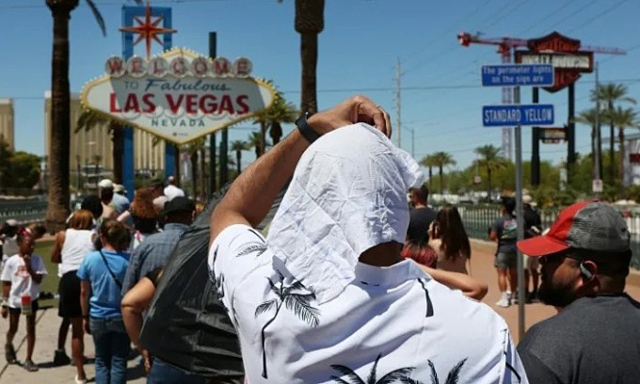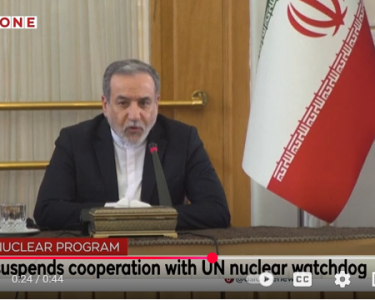
LOS ANGELES, July 16 (NNN-AGENCIES) — Brutally high temperatures threatened tens of millions of Americans Saturday, as numerous cities braced to break records under a relentless heat dome that has baked parts of the country all week.
The National Weather Service warned of an “extremely hot and dangerous weekend,” with daytime highs routinely ranging between 10 and 20 degrees Fahrenheit above normal in the US West.
Residents of central and southern California, for example, could expect to see thermometers peaking at 100 to 110 degrees Fahrenheit (38 to 43 degrees Celsius), it said.
By mid-day Saturday, California’s famous Death Valley, one of the hottest places on Earth, had reached a sizzling 119F (48C), with Sunday’s peak predicted to soar as high as 130F (54C). Even overnight lows there could exceed 100F (38C).
The heat is forecast to remain anchored over the West for the weekend, “growing hotter in the South by early next week.”
Authorities have been sounding the alarm for days, advising people to avoid outdoor activities in the daytime and to be on the watch for signs of dehydration, which can quickly become fatal in such temperatures.
In the hardest-hit areas, residents face a daily endurance marathon against the sun.
The Arizona state capital of Phoenix has recorded 16 straight days above 109F (43C). It had reached 111F by noon Saturday, en route to an expected 115F. Las Vegas, Nevada was broiling amid similar temperatures.
In Texas, the border city of El Paso had seen 29 consecutive days of temperatures topping 100F (38C).
Residents of the Texas metropolis have been asked to conserve energy from 2:00 to 10:00 pm Saturday through Monday by provider Reliant Energy, in an attempt to mitigate high demand.
Heat waves are occurring more often and more intensely in major cities across the United States, according to the federal Environmental Protection Agency, with a frequency of six per year during the 2010s and 2020s compared to two per year during the 1960s.
“This heatwave is NOT typical desert heat,” the National Weather Service’s Las Vegas branch tweeted, specifying that “its long duration, extreme daytime temperatures, & warm nights” were unusual.
While it can be hard to attribute a particular weather event to climate change, scientists insist that global warming — linked to humanity’s dependence on fossil fuels — is responsible for the multiplication and intensification of heat waves in the world.
The US heat wave comes after the EU’s climate-monitoring service said the world saw its hottest June on record last month. — NNN-AGENCIES






